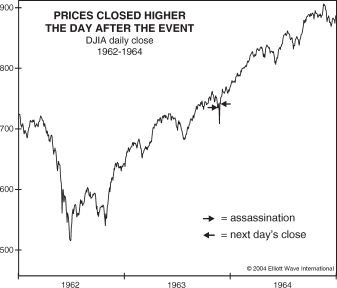In the intricate tapestry of the US economy, the service sector plays a pivotal role. It encompasses everything from healthcare and education to retail and tourism, employing a significant portion of the workforce and driving economic growth. Understanding the health of this sector is crucial for businesses, investors, and policymakers alike. Enter the ISM Non-Manufacturing Purchasing Managers’ Index (PMI), a powerful indicator that provides valuable insights into the current state and future trajectory of the US service sector.

Image: www.mcbyrdwealth.com
Imagine, for a moment, being a business owner in the hospitality industry. You’re keenly aware of the fluctuating demand for your services, the impact of economic trends on customer spending, and the ever-present competition. How can you gain a clearer understanding of the bigger picture and navigate these challenges effectively? The ISM Non-Manufacturing PMI, like a seasoned navigator charting a course through choppy waters, offers valuable data points to guide your decisions.
Understanding the ISM Non-Manufacturing PMI
A Comprehensive Overview
The ISM Non-Manufacturing PMI, also known as the ISM Services PMI, is a monthly survey conducted by the Institute for Supply Management (ISM). It surveys purchasing managers at businesses within the non-manufacturing sector, gathering data on key aspects of their operations, including:
- New Orders: Reflects the level of demand for their services.
- Production/Business Activity: Gauges the pace of output and overall business activity.
- Employment: Indicates the hiring or layoff trends within the sector.
- Supplier Deliveries: Tracks the speed at which suppliers are delivering materials, offering insights into potential bottlenecks or disruptions.
- Inventories: Measures the level of raw materials and finished goods in stock.
- Customer Inventories: Reflects the amount of inventory held by customers, suggesting future demand.
- Prices Paid: Tracks changes in input costs, providing early clues about potential inflation.
- New Export Orders: Measures demand for services from foreign customers, highlighting the global reach of the sector.
The results of this survey are then compiled into an index, where a reading above 50 indicates expansion in the non-manufacturing sector, while a reading below 50 signals contraction.
Dissecting the Data
The ISM Non-Manufacturing PMI is not just a single number; it’s a rich source of data that provides a nuanced understanding of the service sector. By analyzing the individual components of the index, economists and business leaders can gain deeper insights into specific trends within the sector. For example, a surge in new orders might suggest strong consumer demand, while a decline in employment could indicate concerns about future growth.
The index’s historical performance plays a crucial role in interpreting current data. By comparing the current reading to historical averages, analysts can determine if the service sector is expanding at a faster or slower pace than in previous periods. This historical context helps to identify potential turning points in the economy and guides decision-making.

Image: www.varchev.com
Beyond the Numbers: Contextualizing the PMI
The ISM Non-Manufacturing PMI, while a valuable tool, should not be viewed in isolation. It’s essential to consider other economic indicators, such as the ISM Manufacturing PMI, consumer spending data, and unemployment rates, to obtain a complete picture of the economic landscape. The PMI can also be affected by external factors, such as global trade tensions or geopolitical events, which must be factored into analysis.
Additionally, different industries within the service sector may experience varying levels of growth or contraction. Therefore, a single PMI reading does not necessarily paint an accurate picture of the entire sector. It’s important to delve deeper and analyze the performance of specific industries to gain a more insightful understanding of the service sector’s dynamics.
Recent Trends and Developments
Recent trends in the ISM Non-Manufacturing PMI have been a mixed bag. The index has typically fluctuated around the 50 mark, suggesting a generally stable service sector but with some indicators pointing to potential challenges. As of [insert most recent data], the index is at [insert value], which signifies [interpret the data based on the value provided].
Some of the key factors influencing the recent PMI readings include:
- The ongoing COVID-19 pandemic, which continues to disrupt supply chains and impact consumer behavior.
- Rising inflation, which is putting pressure on businesses to raise prices and potentially affecting consumer spending.
- The ongoing war in Ukraine and its global economic implications.
- Labor market challenges, including a tight labor market and the increasing costs of labor.
Tips and Expert Advice
For businesses operating within the service sector, the ISM Non-Manufacturing PMI provides valuable insights into the broader economic environment and can be used to make informed decisions and manage risks effectively.
Here are some specific tips for incorporating the PMI into your business strategy:
- Monitor the PMI Regularly: Stay updated on the latest readings and pay attention to any significant changes or trends.
- Analyze Individual Components: Don’t just focus on the headline number; delve into the specific components of the index to identify areas of strength and weakness.
- Compare to Historical Data: Understand how the current PMI compares to historical trends to identify potential patterns and anomalies.
- Consider External Factors: Factor in external economic and geopolitical influences that could impact the PMI and your business.
- Adjust Strategies Accordingly: Use the PMI as a tool to adjust your pricing, inventory levels, marketing strategy, and other business decisions to adapt to changing market conditions.
FAQ
Q: What are the limitations of the ISM Non-Manufacturing PMI?
A: Like any economic indicator, the ISM Non-Manufacturing PMI has its limitations. It is a survey-based indicator, which means that it relies on the opinions of purchasing managers, who may not always have a complete understanding of their industry’s performance. Additionally, the PMI is a snapshot of the economy at a single point in time and may not fully capture the nuances of the service sector’s performance over time.
Q: How frequently is the ISM Non-Manufacturing PMI released?
A: The ISM Non-Manufacturing PMI is released monthly, typically on the first business day of the month.
Q: Is the ISM Non-Manufacturing PMI a leading or lagging indicator?
A: The ISM Non-Manufacturing PMI is considered to be a leading indicator, meaning that it can provide insights into future economic activity. This is because purchasing managers often have a forward-looking view of their businesses and can anticipate changes in demand and supply.
Q: What are some alternative indicators to the ISM Non-Manufacturing PMI?
A: Several other indicators provide insights into the health of the service sector. Some of these include:
- The S&P Global US Services PMI
- The Institute for Supply Management (ISM) Composite PMI
- The Federal Reserve’s Beige Book
- Consumer spending data
- Employment data
Ism Non Manufacturing Pmi
Conclusion
The ISM Non-Manufacturing PMI stands as a vital barometer of the US service sector, providing valuable insights into its current state and future trajectory. By analyzing the index’s components, understanding historical trends, and considering contextual factors, business leaders, investors, and policymakers can make informed decisions and navigate the evolving dynamics of the service sector. Are you interested in learning more about the ISM Non-Manufacturing PMI and its impact on your industry? Let us know in the comments below!







